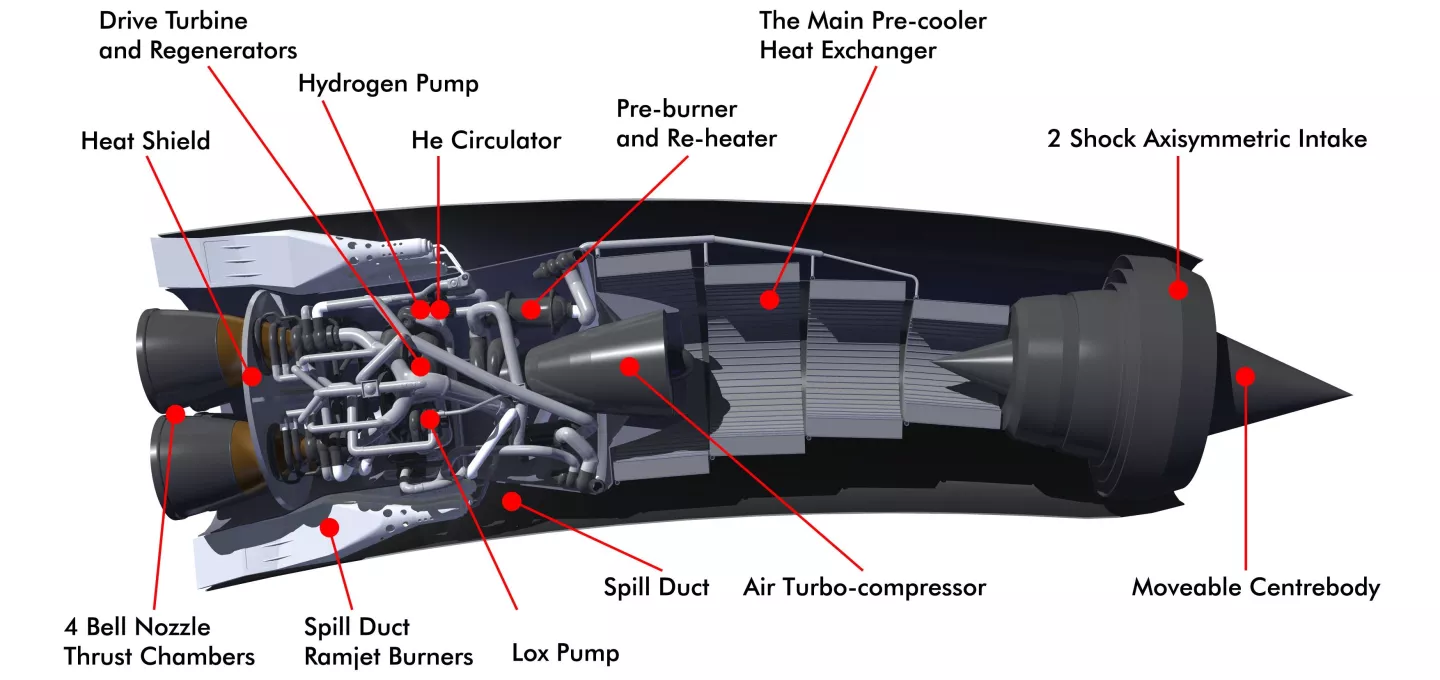Reaction Engines Ltd. announced on Wednesday the completion of a critical round of testing of its SABRE engine’s precooler system. The SABRE is a radical type of hybrid jet/rocket engine capable of propelling a spacecraft into orbit or an aircraft in the atmosphere, at a velocity of Mach 5 (3,800 mph, 3,300 knots, 6,115 km/h). It’s intended for Reaction Engines’ SKYLON spacecraft and its airliner derivative, the LAPCAT A2 hypersonic aircraft.
The company had carried out its own tests earlier this year at its facility in Oxfordshire, UK and this series was done under the supervision of the European Space Agency (ESA) on behalf of the UK Space Agency to provide official validation of the technology. According to Reaction Engine’s press release, "the pre-cooler test objectives have all been successfully met and ESA are satisfied that the tests demonstrate the technology required for the SABRE engine development."

Skylon itself is something of a radical departure as well. It’s a planned Single Stage To Orbit (SSTO) spacecraft that's intended to take off and land at conventional airports. Unlike many hypersonic craft, SKYLON will take off and accelerate to hypersonic speeds under its own power using the SABRE engine, without the need of a mothership or rocket boosters. The engine is thermodynamically simple, but extremely complex in engineering. It is designed to be extremely lightweight, with the skin of some components being thinner than a human hair.
Conventional rockets require special launch facilities and need to carry along the oxygen needed to burn their fuel. This adds weight and reduces the payload that can be delivered to orbit. If the rocket is a SSTO designed to return to Earth, the payload is even smaller. SKYLON’s SABRE engine reduces the need for carrying so much oxygen by using air like a jet, to burn its fuel for part of the ascent.

SABRE is basically a rocket engine that uses a precooled compressor for part of the ascent. It acts as an air-breathing jet until it reaches Mach 5 and an altitude of 25 kilometers (15.53 mi). By this time, it’s already 20 percent on its way to space. For the other 80 percent, SABRE converts to a pure rocket mode using its onboard store of liquid oxygen instead of air to loft into orbit at a speed of Mach 25 (19,000 mph, 16,500 knots, 30,600 km/h).
Since it works at everything from a dead stop to escape velocity, the SABRE engine not only needs to be able to switch from jet to rocket mode, it also needs to be able to reconfigure its geometry in flight to accommodate the constantly-changing pressure and temperature of the air blasting into it. Imagine being caught in a wind 25 times stronger than that of a Category 5 hurricane, and you can see the magnitude of the problem.

The SABRE engine requires the incoming air to be compressed to 140 atmospheres. This compression makes the air so hot that it would melt any known material, so the incoming air needs to be pre-cooled until its nearly a liquid. Previous experimental engines used the cryogenic hydrogen fuel to cool the heat exchangers, but this wasted fuel and caused all sorts of problems, such as making metals brittle.
SABRE gets around this by using a closed-loop helium cycle. This is designed to cool the incoming airstream from over 1,000ºC (1,832ºF) to -150ºC (-238ºF) in less than 1/100th of a second without blocking with frost. It’s less wasteful of the hydrogen, which keeps the helium loop cold and avoids hydrogen brittling, so more heat-resistant materials can be used. Once cooled, a “relatively conventional” turbo compressor using jet engine technology can be used to compress the air to the required pressure – “relatively” being the operative word for an engine designed to go into space.
Reaction Engines is still years away from a completed engine and the construction of SKYLON is years after that, though the company remains optimistic and is currently seeking additional funds to continue development.
Source: Reaction Engines, LTD

















